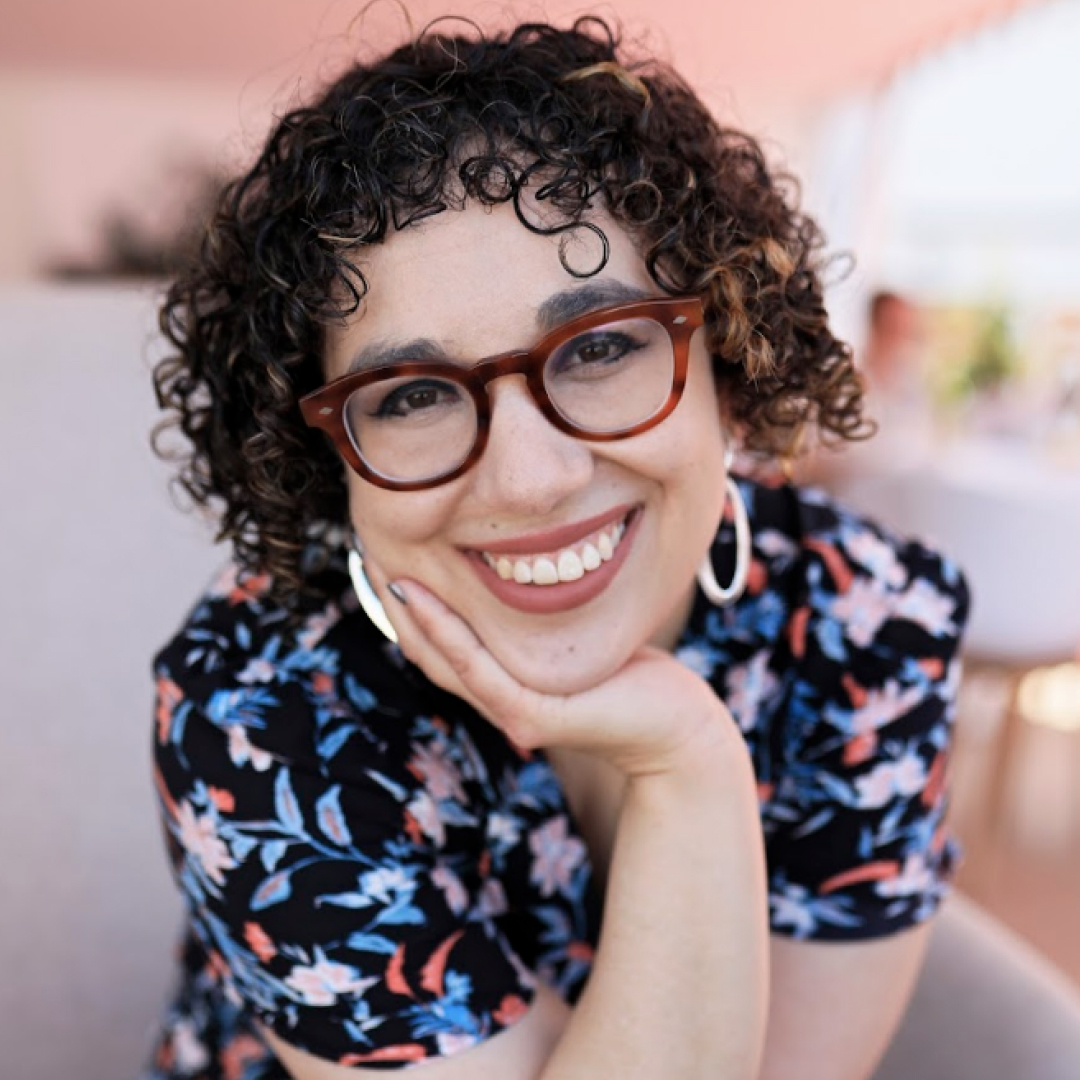How Lorde, Taylor Swift, and 'The Crucible' Tell a Story of Teen Girl Angst in Broadway's 'John Proctor Is the Villain'
Playwright Kimberly Belflower breaks down the significance of the Tony-nominated show's killer needle drops.

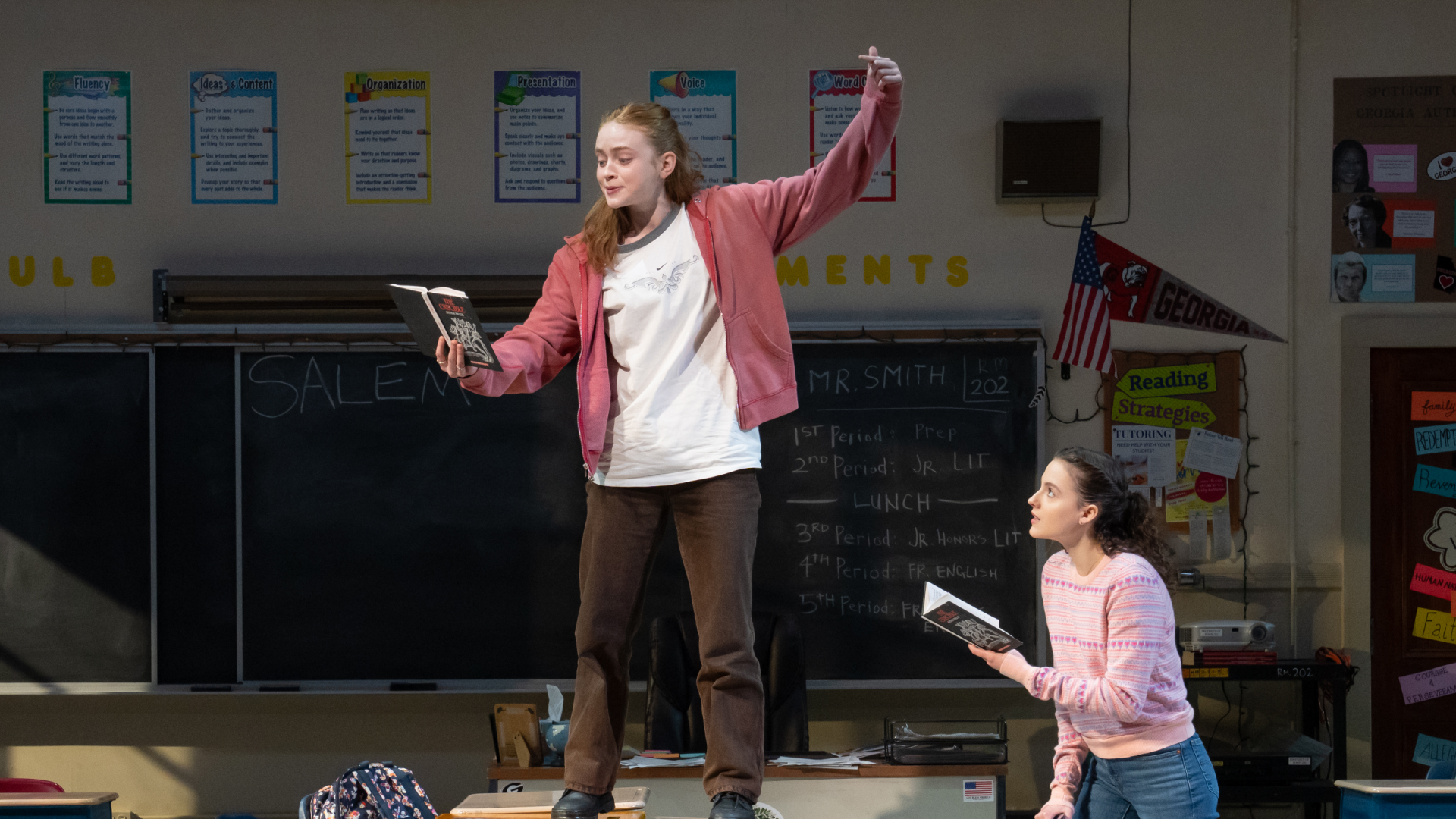
The critically acclaimed Broadway play John Proctor Is the Villain, which just earned seven Tony nominations, is inspired by The Crucible. But the show, written by Kimberly Belflower, doesn't confine its references to Puritans and midcentury theater. It also features a killer needle drop to Lorde's 2017 banger "Green Light."
The track is just as important to Belflower's story as Miller's classic is—and the result is a perfect and beguiling blend of pop culture old and new.
The Danya Taymor-directed play, which opened in April, follows a group of teenage girls in rural Georgia in 2018. Their tiny hometown is rocked by #MeToo scandals just as they are reading the 1953 play about the Salem Witch Trials, itself an allegory for McCarthyism, in their honors English class. But to Shelby, played by Stranger Things star Sadie Sink in a heartbreaking and ferocious performance, The Crucible's hero John Proctor is not the noble soul her teacher, Mr. Smith (Gabriel Ebert), suggests. Instead, she sees the classic figure of American drama as a grown man who took advantage of a broken teen girl, Abigail Williams, usually framed as the story's villain. Shelby's passion—and a revelation that follows—is a breaking point for her friends, who are all coming to terms with their own understanding of feminism and autonomy.
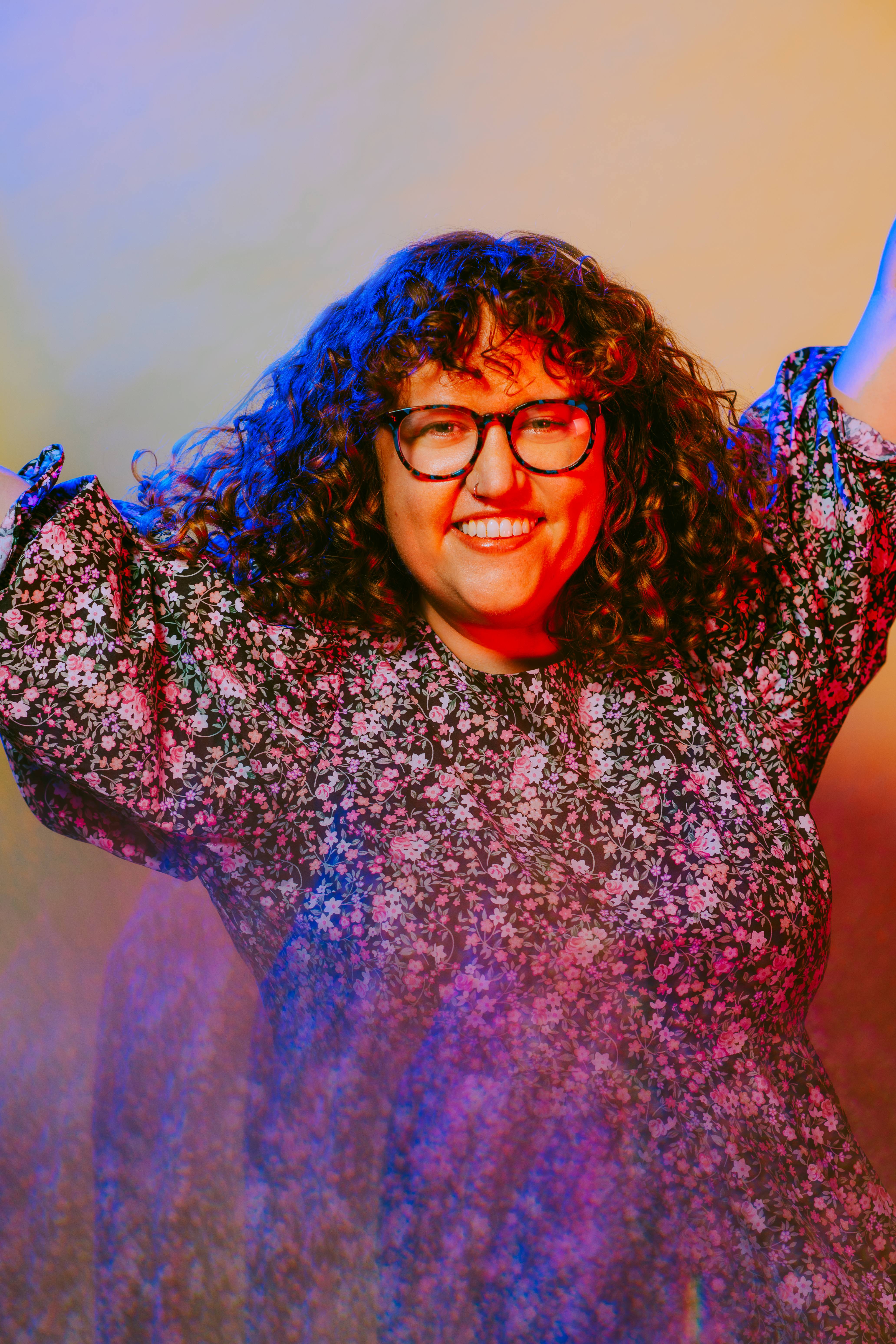
Kimberly Belflower's other plays include Lost Girl, which won the 2018 Kennedy Center Darrell Ayers National Playwriting Award, and Saint Pigtail.
In the show's final moments, "Green Light" envelopes N.Y.C.’s Booth Theatre as Shelby and her friend Raelynn (Amalia Yoo) turn their presentation on the play into a cathartic, ecstatic dance. Their bodies throb with the music, and lines like "Those rumors they have big teeth" take on new meaning. Lorde, however, is not the only pop star referenced in the play, which was performed in Washington, D.C. and Boston before reaching Broadway.
"I think that our relationship to pop music and to dance as teenagers is so specific," Belflower tells Marie Claire.
While the Melodrama hit is the powerful closing song, the listening habits of Belflower's characters provide insight into how they view the world. A discussion of Taylor Swift leads one girl (Maggie Kuntz) to proclaim how she liked Swift before her music became too sexual, and culminates in a sing-along to "Dear John." Later, the class know-it-all (Fina Strazza) references Lizzo in a rant about body positivity.
With John Proctor Is the Villain running now until July 6, Bellflower opens up about the significance behind her song choices for the play, the letter she wrote to Lorde, and whether she’s talked to Swift with All Too Well: The Short Film star Sink.
Get exclusive access to fashion and beauty trends, hot-off-the-press celebrity news, and more.
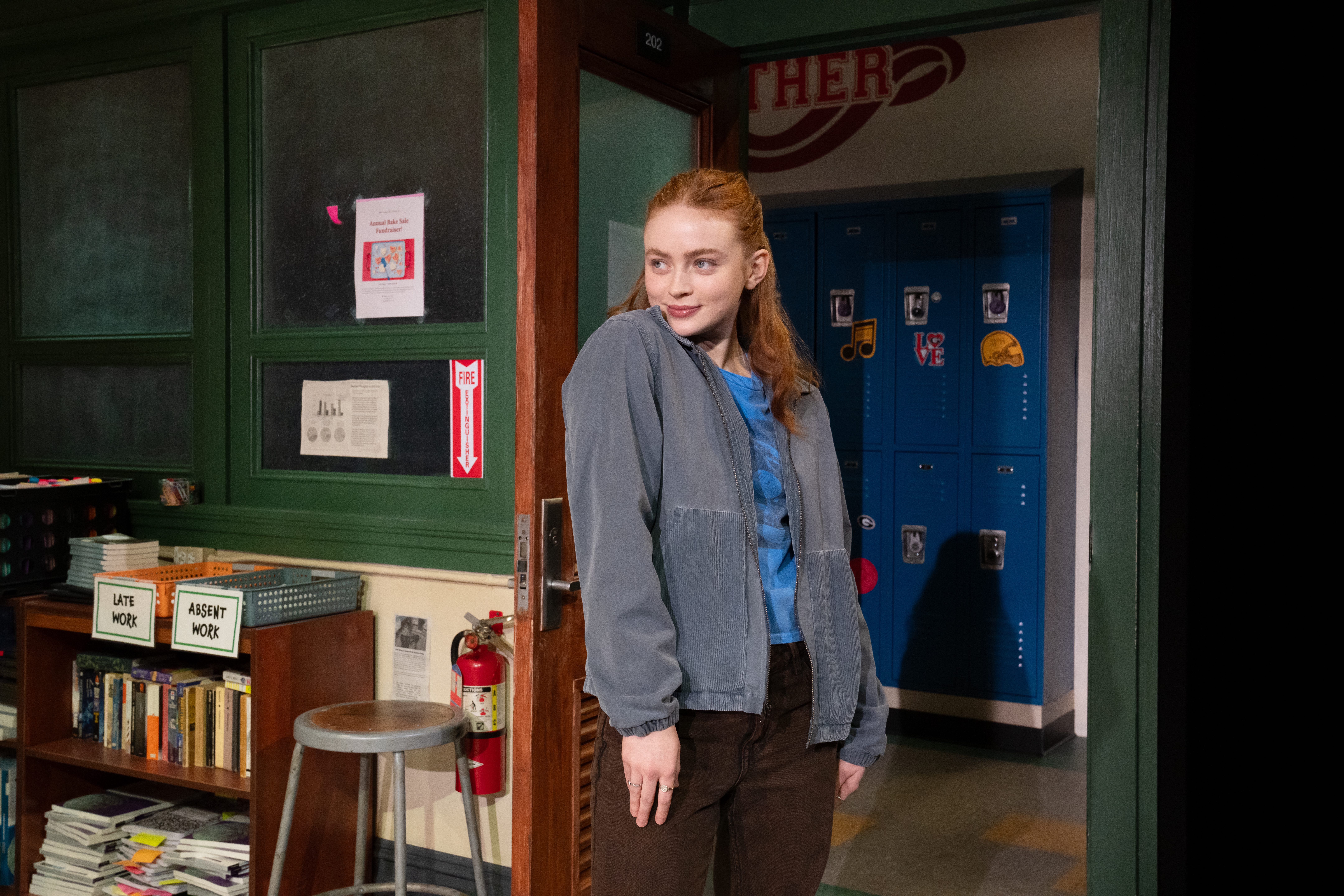
John Proctor Is the Villain marks Sadie Sink's first return to Broadway since appearing as a child actor in 2012's revival of Annie and 2015's The Audience.
Marie Claire: The play references The Crucible, which is not the most modern pop culture, but the characters are also constantly drawing from the art they consume, whether that’s Glee or American Horror Story. How did you know that had to be part of the play?
Kimberly Belflower: That is how I experienced my own adolescence. I am from a very small town in rural Georgia, much like the one in the play. I feel like [pop culture was the] way that I figured out that other lives were possible. I'm the only person in my family who doesn't farm. Entertainment Weekly was my Bible. I wrote Gilmore Girls fan-fiction in high school, and I used to write down all of the books they were reading and all of the pop culture references they made, and then make that my education. But I think that that is such a common teenage thing: You read something in school and then you're like, Wait, that reminds me of this other thing. It becomes so enmeshed in the way that you're forming your identity and yourself and making sense of your place in the world.
The impetus of the play is, What would it be like to be coming of age in a moment like #MeToo? I think that if you were reading The Crucible and you hear in an interview that Woody Allen calls #MeToo a "witch hunt," then I imagine you would make some parallels. But then you're also listening to Lorde and thinking about how our pop culture references reflect who we are.
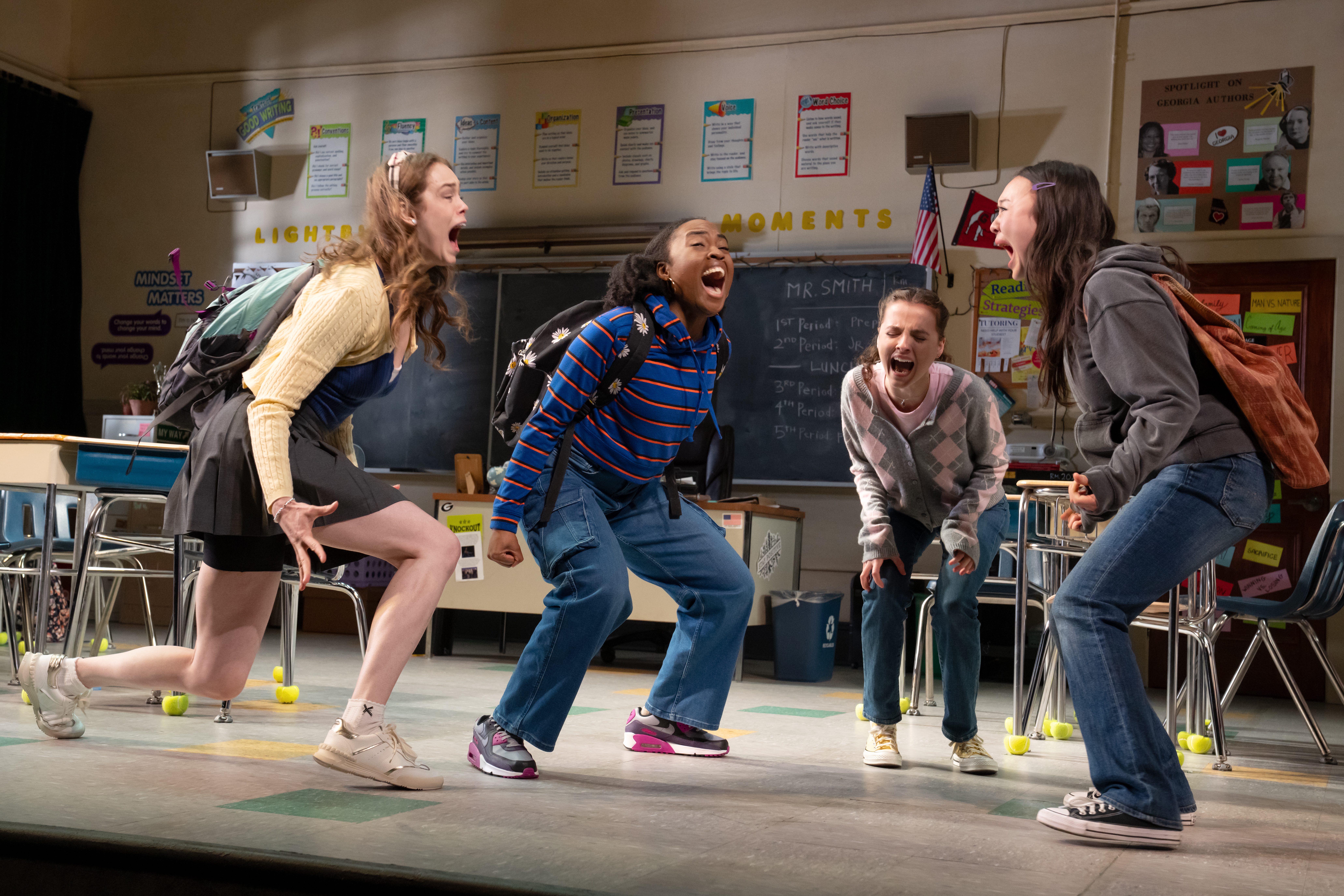
Ivy (Maggie Kuntz), Nell (Morgan Scott), Beth (Fina Strazza), and Raelynn (Amalia Yoo) in their classroom.
MC: When did you know Lorde's "Green Light" would be so important to the play?
KB: From the first days of writing the play. Extremely early on, I was like, "This ends in a dance to 'Green Light.'" As a teenage girl, making up dances in your room and with your friends is such a shortcut to embodiment in a time when you feel either that you're being overly sexualized or you're being ignored or you aren't able to exist in your body without commentary on your body. In The Crucible, the inciting incident is that these girls go out dancing in the woods. Knowing that, Oh, that is an ancient thing, it's not just a modern phenomenon with pop music. It is as old as we are as a culture. Knowing that and wanting to play with that relationship, I think the play is so much about how cycles repeat themselves, like cycles of power, cycles of hierarchy, but also cycles of abuse and of pop music and of dancing. Over and over again, these things happen. And then, when the song "Green Light" came out, it did something to me.
MC: Tell me about that.
KB: I've loved Lorde since day one. The day "Green Light" came out, I put it on repeat. It hit me on many levels. It is a pop song that defies the rules of how pop music moves and what the structural norms are. That pre-chorus, the shift from minor to major key, and when she says, "I hear sounds in my mind, brand new sounds in my mind," to me, was the most perfect encapsulation of what it is to move through trauma, move through pain, and come out on the other side. It's not like, Oh, I made it through that, I'm done. It's like, Oh, this has changed me forever, but it has given me access to new sounds, to new feelings that I'm going to make into something. That is what Shelby and Raelynn are doing at the end of the play.
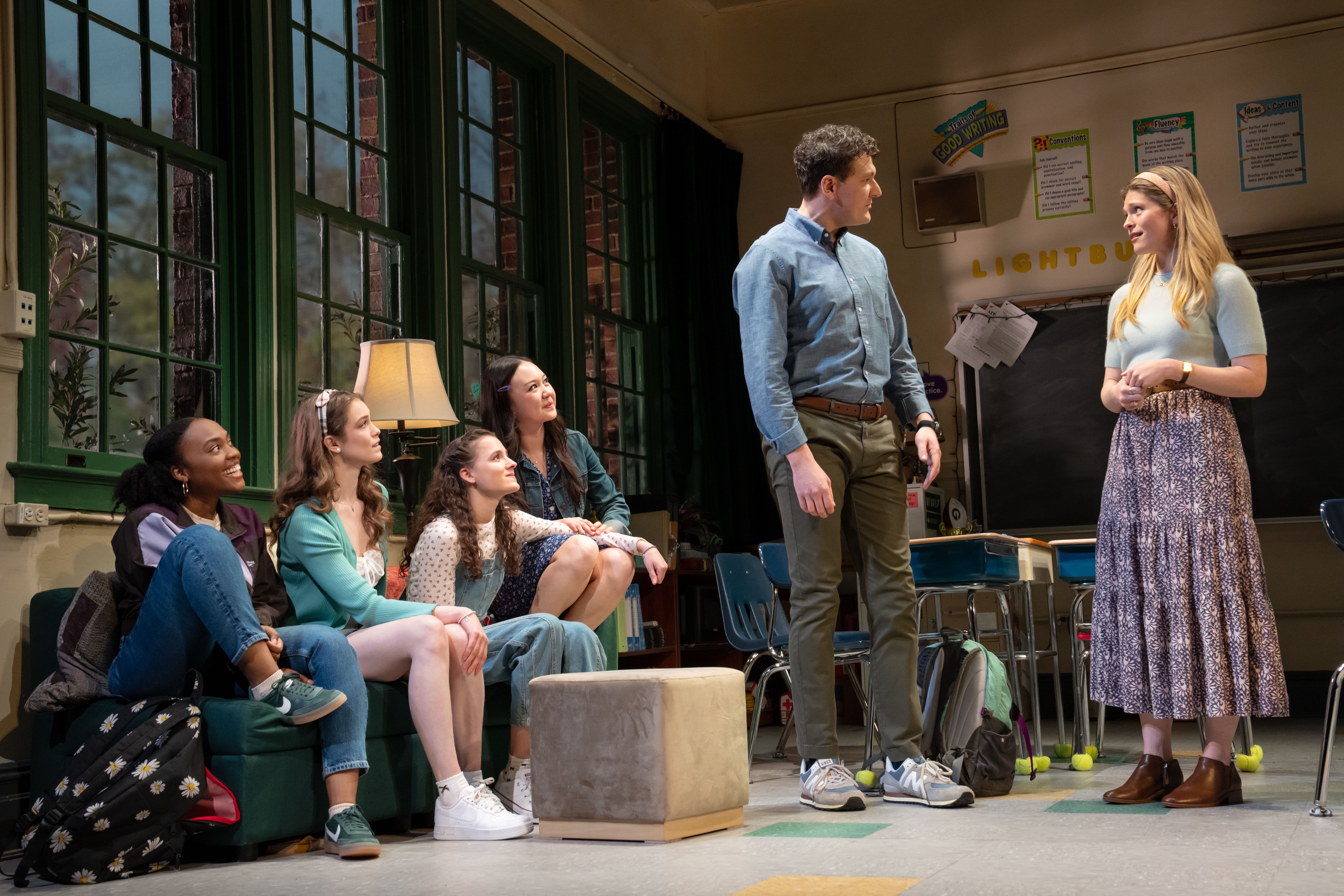
Among the show's Tony nominations were acting nods for Sink and Gabriel Ebert, who plays Mr. Smith, as well as Best Play and Best Director for Danya Taymor.
MC: Were there any questions about whether you could get the rights to use it?
KB: I was very worried about it. We had to cross that bridge once we had a publication agreement [for the script] in place because when it was being done at colleges or even regional theaters, it's a different process. But once it moves into publication, the song is written into the stage directions of the play. That was when we had to be like, "Okay, we have to find a way to get these rights permanently." That was a multi-step process: my publisher approached her publisher, and my agent approached her manager.
I had written her a letter that I gave to my agent and my publishers, as, I don't know if this will even get to her, I don't know if it'll even matter, but just wanted to know that if by chance it did. I was able to put into my own words, "This is why this has to be this song, and this is what your song means to me. This is what your song means to my characters. This is what's happening in the play." Her manager told my agent that she read the letter, and that was a part of her saying yes.
MC: Has there been an invitation for her to see it?
KB: Our press team invited her to the opening. She was not there. But I also know that she's in New York City right now, so I'm like, "Come on, please."
[Ed note: Lorde has since reposted a TikTok from the official John Proctor account featuring Sink lip syncing to her new single "What Was That."]
When our politics intersect with our own lives in a very direct way, it can be surprising what comes up for us. That was such a question I wanted to explore.
MC: Taylor Swift’s music is also heavily featured in the play. Why was it so important to reference Swift?
KB: I am in my mid-30s, so Taylor's first album came out when I was a freshman in college. My whole adulthood has been defined by her music. But the characters in this play, they've never known a world where Taylor Swift wasn't a massive star in it.That's the fabric of pop culture and the world that they grew up in.
Also, being in the moment in 2017 through 2019, [that was] when you see her start to make some shifts leading up to [her documentary] Miss Americana and her #MeToo moment. In Miss Americana she says, "Oh, I always tried to be very good, and I tried to be very quiet, and I tried to be very agreeable and be who people wanted me to be and then at some point I had to speak my truth, and then this thing happened to me, and if it happened to me, who else does it happen to?" Knowing how formative that could have been for me as a teenager to see. It was formative for me as an adult to see.

"The impetus of the play is, What would it be like to be coming of age in a moment like #MeToo?" says Belflower.
MC: Sadie Sink was in Swift’s music video, "All Too Well: The Short Film." Have you talked to her about Swift’s music in the play? Do you know if she’s talked to Taylor about it?
KB: I don't know. I feel like we're close enough now that I could ask, but early on, because I know that so many people ask Sadie for so many things, and I [was] like, "I am just not going to bring it up." She knows what it means to me because it's in the play that she's starring in. And I will talk about her in rehearsals, but I've been very restrained. I know that she also is a Swiftie, and that will come up in organic ways.
MC: One thing I love about the play is that the girls don't all rally behind the #MeToo movement. How did you also see that reflected in how they talk about Swift?
KB: Even outside of rural Georgia, when our politics intersect with our own lives in a very direct way, it can be surprising what comes up for us. That was such a question I wanted to explore. It can be easier to look at someone like Harvey Weinstein and be like, "Oh, he's a monster, full stop." But then it's like, Well, what if it's my favorite teacher who has opened my brain into new possibilities to the world? What if it's my dad or my friend's dad who has been like a second father to me? What happens when it's someone that we love? And what is it to hold multiple truths at the same time? I think that's just our work as humans, and it feels like, especially in this moment in time, everything is good or bad, black or white, and trying to put things into very neat boxes, and it's like, that's not what anything is.
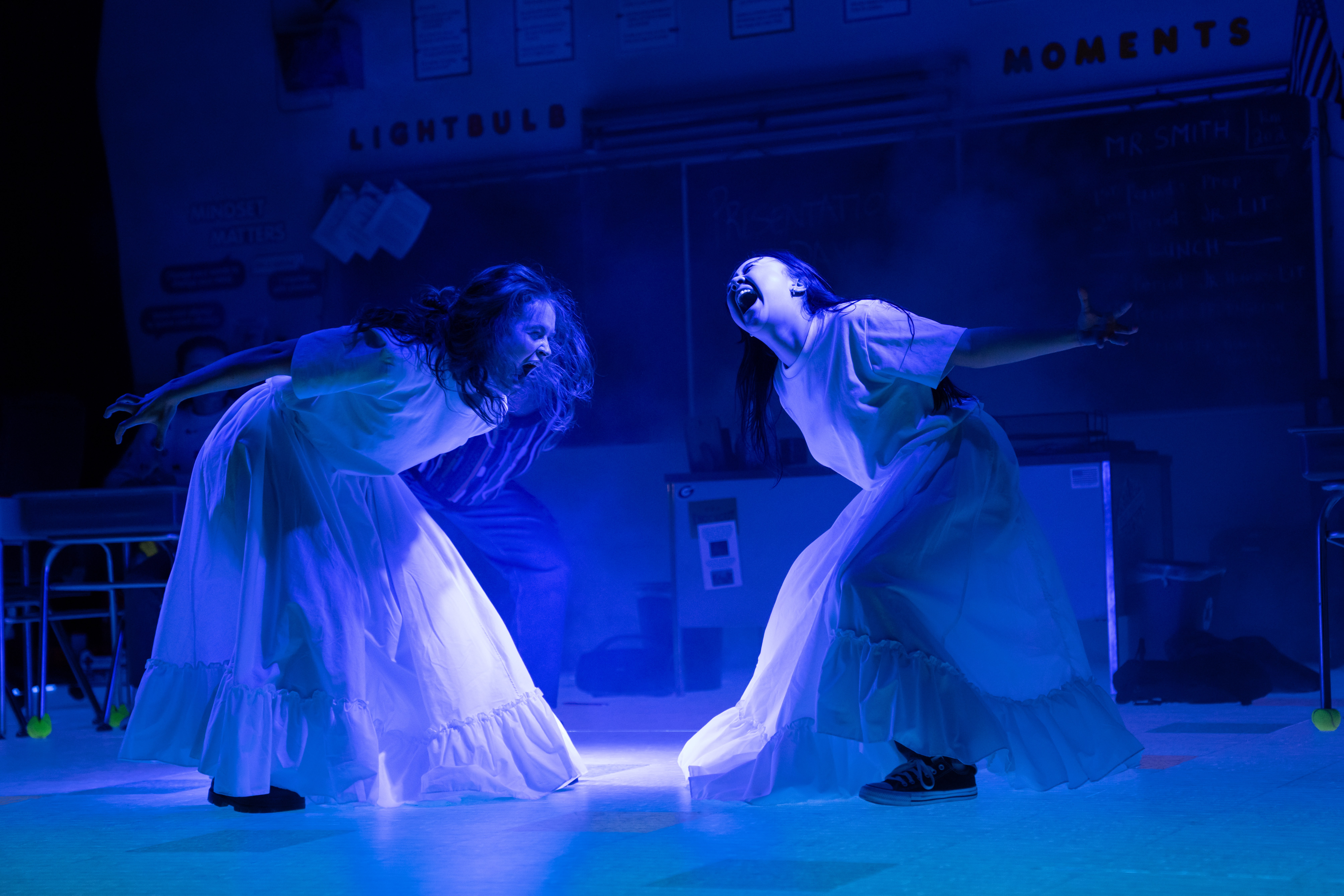
Shelby (Sink) and Raelynn (Amalia Yoo) in the climactic scene set to "Green Light."
MC: The dance at the end feels true to how teen girls dance, but also how Lorde dances. What were the discussions around that in rehearsal with director Danya Taymor?
KB: We have an amazing movement director, Tilly Evans-Krueger. The three of us talked a lot. It's also laid out in the stage directions. There is a moment where it starts to look less like a dance and more like an exorcism, and that is so much how I feel like watching Lorde dance. There's not the presentation of, "Look at me, look at my body," you just feel it like it is purging something, it is expressing something so deep and primal. We talked about that. We talked about, “What can their bodies do? What would they have been able to make up in their rooms?”
MC: Why was it important that the final scene reflect how Shelby acknowledges that she’ll be traumatized by this experience, but also give the audience a sense of hope?
KB: For me, that whole final presentation, starting with the scene that they perform as Abigail and Elizabeth from The Crucible, is so much about these two girls reclaiming their voices and reclaiming their bodies. [With Shelby] just being able to be in her body, which I imagine she has felt so outside of. So to have this moment where it's like her movements are ugly and feral and primal, and for her to not be using her body for anyone else's pleasure but her own, just expressing what she needs to express without thinking about how anyone is going to receive it and breaking free of the choreography and purging something, channeling something. So it's like, yeah, she's still going to be unpacking this trauma for the rest of her life, but also this moment changes something for her and for everyone witnessing it.
Esther Zuckerman is a freelance entertainment journalist and critic. Her work appears in the New York Times, GQ, Bloomberg, the Wall Street Journal, the Los Angeles Times, Indiewire, and Time among others. She is the author of three previous books: A Field Guide to Internet Boyfriends: Meme-Worthy Crushes from A to Z (2021), Beyond the Best Dressed: Cultural History of the Most Glamorous, Radical, and Scandalous Oscar Fashion Hardcover (2022), and Falling in Love at the Movies: Rom-Coms from the Screwball Era to Today (2024).
